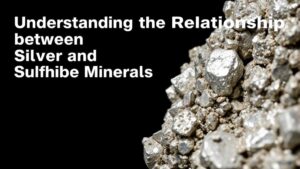Understanding the Relationship Between Pyrite and Chalcopyrite in Copper Mining
Understanding the Relationship Between Pyrite and Chalcopyrite in Copper Mining
Copper mining not only plays a crucial role in the global economy but also involves complex interactions between various minerals. Two of the most significant minerals encountered within the copper mining process are pyrite (FeS2) and chalcopyrite (CuFeS2). This article explores the relationship between these two minerals, their formation, significance in copper extraction, and implications for mining operations.
The Nature of Pyrite and Chalcopyrite
Pyrite, often referred to as fools gold due to its metallic luster and yellow-gold color, is an iron sulfide mineral frequently found in sedimentary and metamorphic rocks. Chalcopyrite, on the other hand, is a key copper ore that constitutes a significant source of copper in nature. It is characterized by its brass-yellow hue, which can tarnish to exhibit various colors over time.
The primary difference between these two minerals lies in their chemical composition. Pyrite consists of iron and sulfur, while chalcopyrite combines copper, iron, and sulfur. This difference not only impacts their physical properties but also their economic value in mining operations.
Formation and Occurrence
Both pyrite and chalcopyrite typically form through hydrothermal processes associated with volcanic activity. They can often be found in the same geological settings, particularly in copper deposits. But, their stability in varying environmental conditions affects their prevalence. For example, chalcopyrite is generally more prevalent at elevated temperatures and pressures, while pyrite can form at lower temperatures, often in oxidizing environments.
- Pyrite is commonly found in sedimentary rocks, shales, and coal.
- Chalcopyrite is frequently located in volcanic rocks and copper-rich veins.
Economic Significance in Copper Mining
Chalcopyrite is one of the primary sources of copper, accounting for approximately 70% of the world’s copper production. On the other hand, pyrite, although not a direct source of copper, can have implications for copper extraction through mechanisms like acid mine drainage and pyrometallurgical processes.
During copper extraction processes, such as flotation, chalcopyrite is favored due to its higher copper content. But, the presence of pyrite can complicate the process. For example, pyrite can compete with chalcopyrite in flotation, reducing the overall yield of copper. On the other hand, the oxidation of pyrite can liberate sulfuric acid, which can further be utilized in leaching processes, making it potentially beneficial under certain circumstances.
Environmental Considerations
The interaction between pyrite and chalcopyrite also raises environmental concerns, particularly regarding the generation of acid mine drainage. Pyrite oxidizes when exposed to water and air, leading to the production of sulfuric acid, which can leach heavy metals into surrounding water bodies, creating ecological hazards.
- Acid mine drainage can lower pH levels in local water systems, harming aquatic life.
- Effective management strategies are necessary to mitigate these environmental impacts.
Real-World Applications
The relationship between pyrite and chalcopyrite is evident in various real-world scenarios. For example, the Olympic Dam in Australia is one of the largest copper deposits globally, primarily comprising chalcopyrite interspersed with pyrite. Understanding the behavior of these minerals has been critical in optimizing extraction techniques and minimizing environmental impacts.
Also, mining engineers and geologists often employ advanced analytical techniques, such as X-ray diffraction and scanning electron microscopy, to assess the relative proportions of pyrite and chalcopyrite in ore samples, leading to improved recovery strategies.
Actionable Takeaways
- Mining companies should invest in research to better understand the catalyzing role of pyrite in copper extraction.
- Environmental strategies must be developed to manage acid mine drainage and minimize its impact on surrounding ecosystems.
- Integrating modern analytical techniques can lead to more efficient extraction and better resource management.
To wrap up, the relationship between pyrite and chalcopyrite is a nuanced aspect of copper mining that impacts both economic viability and environmental sustainability. Understanding their interaction can lead to improved mining practices and reduced environmental risks, shaping the future of copper extraction.



